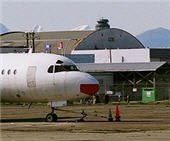 Back in 1998, at the Department of Informatics at the University of Umeå in Sweden, the professors had decided that instead of the final exam being solely a regurgitation of knowledge gleaned from text books and lectures, it would be a good idea for students to venture out into the real world to complete their bachelor's degrees. In teams of two, they would spend time with a local business, learn how Information Technology fit in with their daily work, and present it back to the professors.
Back in 1998, at the Department of Informatics at the University of Umeå in Sweden, the professors had decided that instead of the final exam being solely a regurgitation of knowledge gleaned from text books and lectures, it would be a good idea for students to venture out into the real world to complete their bachelor's degrees. In teams of two, they would spend time with a local business, learn how Information Technology fit in with their daily work, and present it back to the professors.
While most students received mundane case studies, the one that Niclas Olovsson and his teammate were assigned became the envy of the other students - the usage of IT tools for supporting flight mechanics at a local airport. Upon receiving their assignment, Niclaus figured that any modern airport would require a state-of-the-art system to keep their airplanes in the air. He imagined hand held smart terminals that received work orders over an intranet, sent data back over an extranet to a VB application over the internet! The synergistic combinations of buzzwords were endless! However, on the morning of their arrival, much to their chagrin, all they found was a greasy old PC...and Klaus.
Klaus was the head of maintenance for the airline, but you wouldn't know it by looking at him. Smelling like a combination of jet fuel and Camels, he sure didn't look like management. Probably the only thing that made him different than a car garage "grease monkey" was the wings and airline logo on his grease-stained overalls.
Scratching his week old stubble, Klaus began, "So, ya boys wanna learn about how we use computers in the high tech field of modern avionics? C'mon - step into my office - pull yerselves up a chair!" by office he meant the corner of the hanger with the porta potties and by chair, Klaus meant "oil canisters".
Niclas, carefully perched on a canister, started "So, do you have an intranet that you use to..."
"Whoa, slow down...Save your questions for the end - got a lot to cover."
And in their sessions in the following two weeks, cover he did. Apparently, aviation mechanics are very much into exposing the granular details of everything, from the Airline's Employee Time Entry System to the web page that showed what was for lunch in the cafeteria.
"Did I show you guys our state-of-the-art, custom CMS yet?"
Niclas perked up - "Er, um, no, not yet - go on!"
Content Management Systems are indeed buzzword-worthy - this would make for a fine bullet point in his presentation and just had to be more interesting than another hour covering the minute details of the airline's phonebook application.
However, when Klaus said "CMS", what he really meant was "Folder on the hanger's computer labeled CMS". Some time ago, the airline had paid a one man company to convert the written manuals into PDFs. And so he did. One by one. As pictures. Luckily the Adobe files were roughly covering a chapter each, so the page numbering in the table of contents was somewhat aligned with the page numbers in the PDF for the first chapter, but for any other chapter, the mechanic had to calculate page numbering difference or scroll through the file to find the right section.
"I know it seems strange to you guys, but we just sort of know where to go in the electronic manuals." grunted Klaus.
"But, what about those binders?" asked Niclas' teammate.
"They're the updates we get from the airplane manufacturers."
Niclas and his teammate learned that airplane manufacturers regularily update their manuals, and each release supersedes any previous editions. Therefore, even if details of a procedure are on the computer, the mechanic still had to check the update binders before performing any maintenance.
Once their two-week overview was completed, the information was compiled into a very clean presentation of what the mechanics used to do their daily jobs and was presented to a panel of professors. When asked what, if any, recommendations they would make in regards to the situation, Niclas simply responded "we advise taking the train."

